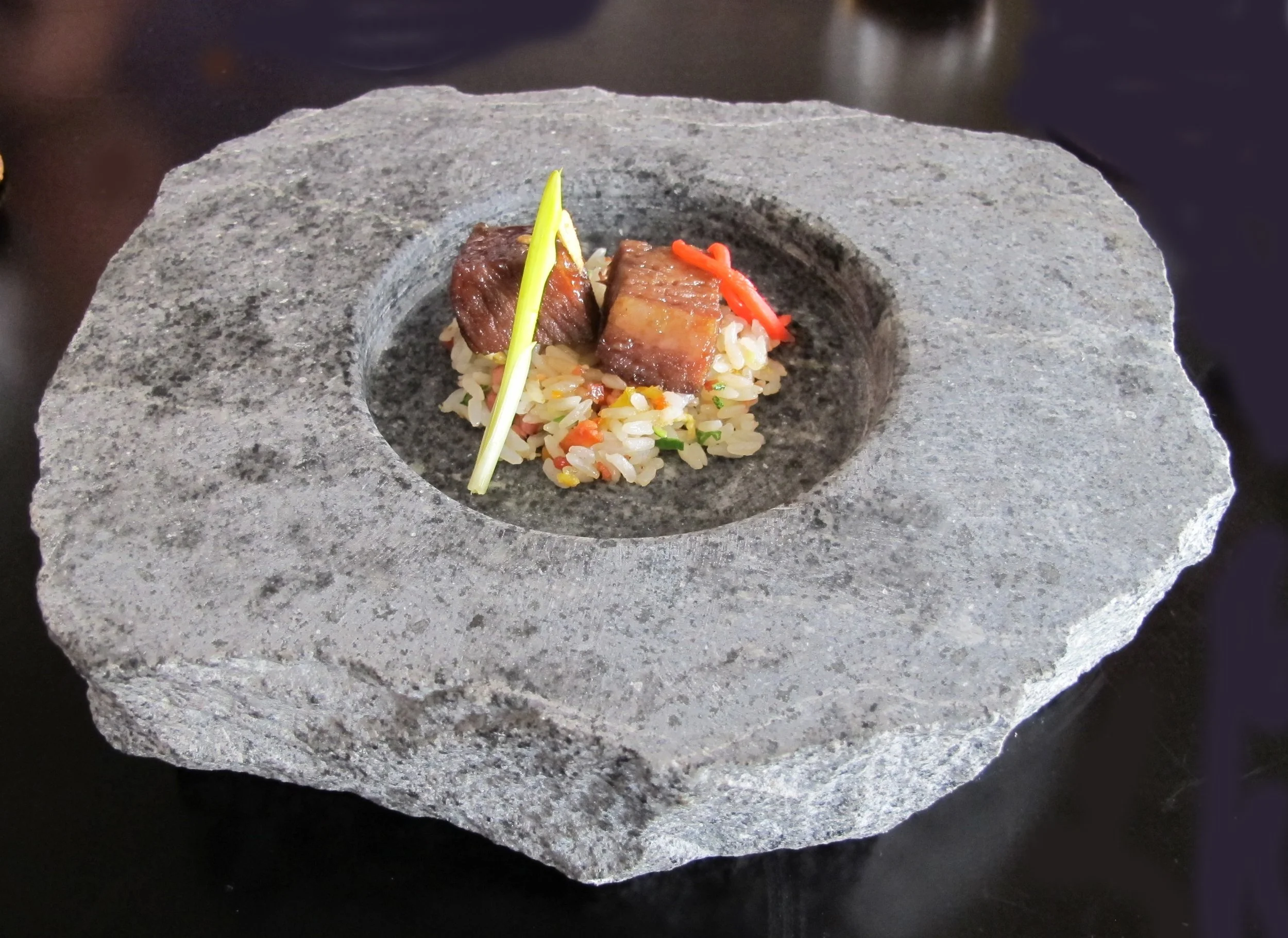MISTURA: The Food Fair of Your Dreams Might Just Be in Peru
Think “State Fair,” the quintessential celebration of rural Americana as portrayed in Rodgers and Hammerstein’s eponymous musical film of 1945. That’s where I am for a moment when I enter the provisional arched gates of the annual mega-food event in Mistura, Peru. Missing are the rides, the games, the cotton candy, the stuffed animal prizes. But the atmosphere is familiar. Couples stroll placidly, hand in hand, directionless and contentedly sipping drinks. Spotlights shine on hawkers shouting invitations to passers-by. A joyous tranquility is in the air.
Mistura is the most extensive gastronomic fair I’ve ever seen. It’s Peru’s most important cultural event, and should make every citizen of this brilliant but poor Latin American country proud. The pet project of star chef Gastón Acurio, it is now sponsored and funded by such diverse backers as the state and one big soft drink manufacturer that wants us to think it’s doing redeemable things as well Every September since 2008, several performance stages, a huge market featuring more than 300 stands and more than 100 food stalls are set up on an empty stretch of beachfront south of Lima’s center. Only Peruvian cuisine is featured. There’s also an Encuentro Gastrónomico for serious students: presentations, lectures and demonstrations that address the latest trends in the restaurant world, modern society’s relationship with food, and the importance of honoring the environment and its ingredients. It’s a proud celebration of peruanidad, the state of being Peruvian.
Everybody from all walks of life goes — at least those who can afford the $6 (U.S.) admission. There were 300,000 attendees in 2012, more this year. And it’s all about food. Nothing makes people happier. Seeing it, talking about it and, of course, eating it.
A welcome message from star chefs
The Encuentro Gastronómico features star chefs and gastronomes from all over the Latino world who expound on their particular culinary identities. In 2013, the guest of honor was Chef Alain Ducasse, who kick-started the fair with a presentation on the importance of healthful eating, extolling the virtue of quality ingredients and the evils of junk food. We knew that. But it’s good to hear it from the mouth of a gastronomic demigod. Later, Acurio presented his new initiative called “Salsa,” which “aims to unite Latin American cooks and share experiences and knowledge.” Preaching to the choir? Perhaps, but necessary in a food world still dominated by Europe and the U.S.
The fair is divided into two main areas, the Gran Mercado and the food stalls. The market, under a huge tent, celebrates all products Peruvian. There are booths dedicated to quinoa (black, red and white), bread, chocolate, olives and, of course, potatoes. Hundreds of them, millions it seems. The vendors are men in brightly colored, hand-embroidered suits and women wearing traditional clothing, hair in braids, topped with what look like hipster hats. They offer purple, red, yellow and white potatoes, little black squiggly ones, large round polka-dotted ones. They’ve schlepped them from the far corners of the Andes in sacks. One proud indigenous lady, her pretty denim-clad daughter looking on, cuts open ayawar huayco to show me its royal purple interior — blue black juice drips down her weathered hand. I want to buy them all; airline/border restrictions hold me back, but I purchase a few kilos anyway.
Eater’s haven at Mistura
A light sea breeze starts to waft through the market tent, carrying with it the incense of the kitchen. Themundos (worlds), as the food stand areas are designated, gently beckon. My heart starts pounding. I need to eat everything. How am I going to do it? There’s no time, no stomach big enough. I’m afraid to blink, fearful it will all disappear. It’s a virtual eater’s heaven. Stands are divided by region.
Mundo Amazónico offers various preparations of the freshwater fish paiche, fragrant tamales of rice seasoned with fresh turmeric called juanes, and to wash it all down the hot pink juice of the camu camu, a jungle fruit with a wildflower-like fragrance.
I forget that we’re not in Mexico and norte doesn’t mean the deserts of Sonora and Chihuahua. The north of Peru is warm and heavily influenced by indigenous culture. The signature dish of this area isseco de cabrito, a stew of goat flavored with black corn “beer,” cilantro, oregano, and fresh and dried chilies. The meat is tender and fragrant, like a mild Indian curry.
In the Mundo de Ceviche section I choose the busiest stand and order a classic tiradito de pescado: thin strips of flounder are showered with spiky leche de tigre, perfumy lime juice with a bit of ground fresh ají, a yellow chili. It’s like sashimi, softer and subtler than Mexican ceviche, masterfully made.
In Mundo Limeño I can’t resist sampling Doña Chela’s aji de gallina. The doña smiles maternally while efficiently ladling out Peru’s comfort dish to adoring fans. Chicken, cooked in beautiful hand-polished earthen pots, is bathed in a velvety cream sauce thickened with bread and augmented by mildly picanteroasted yellow peppers. At this point I’m no longer hungry, but I get a plate anyway.
Peru’s lexicon of cooking includes what has been labeled Nikkei, the melding of Japanese and home traditions utilizing local ingredients. It is proffered at El Mundo Oriental, several of whose stands combine fresh fish corn, ají peppers, yucca and potatoes in new ways. Another popular food category here is chifa, a simplified Chinese adaptation of stir-frying that is found all over Lima.
A crowd magnet
I skip past the Mundo Oriental in order to leave room for grilled chancho, the most popular dish of all. In the Mundo de las brasas (world of the coals), long lines of hungry eaters wait patiently while workers stoke huge, medieval-looking wood fires to roast whole, midsized pigs. Pork-infused smoke permeated this crowded section — the sweet aroma turning even the head of a near-vegetarian. I wait until shortly before closing when I finally procure a plateful of the divinely tender chopped meat. My stomach says “enough already” but my senses reply, “Go for it!”
Peru is now in a gastronomic boom; its culinary traditions have become known around the world in recent years. Street and market food are unparalleled, comparable in scope and quality to that of Mexico or Thailand, and its burgeoning high-end restaurant scene, with its myriad fusions of deep-rooted traditions, is fascinating.
I leave happy, sated. That’s how a visit to a country fair should be.
Note: See http://mistura.pe/ for information about the 2017 edition which will take place in late August or early September.
First published in 2013 by Zesterdaily.com










